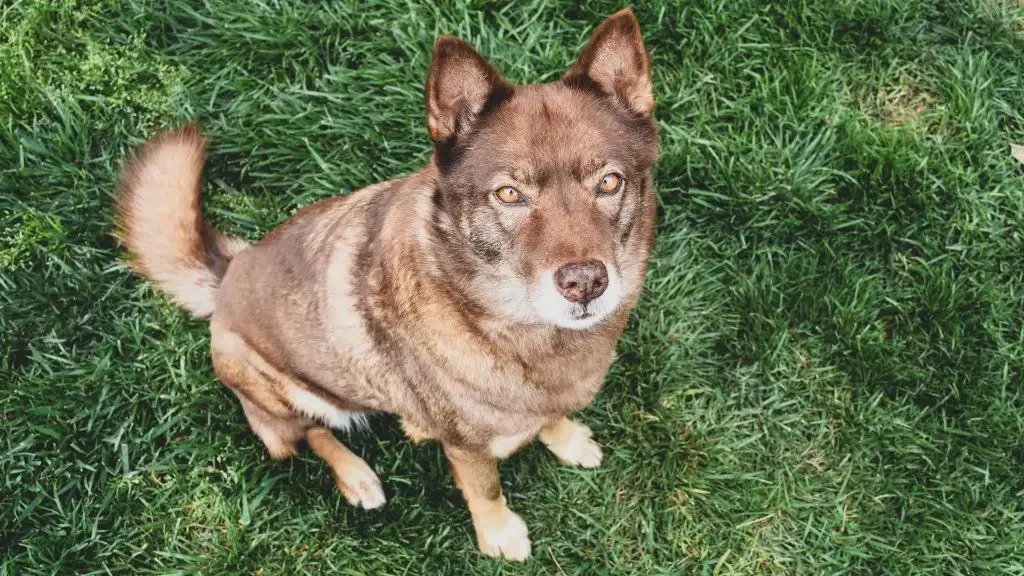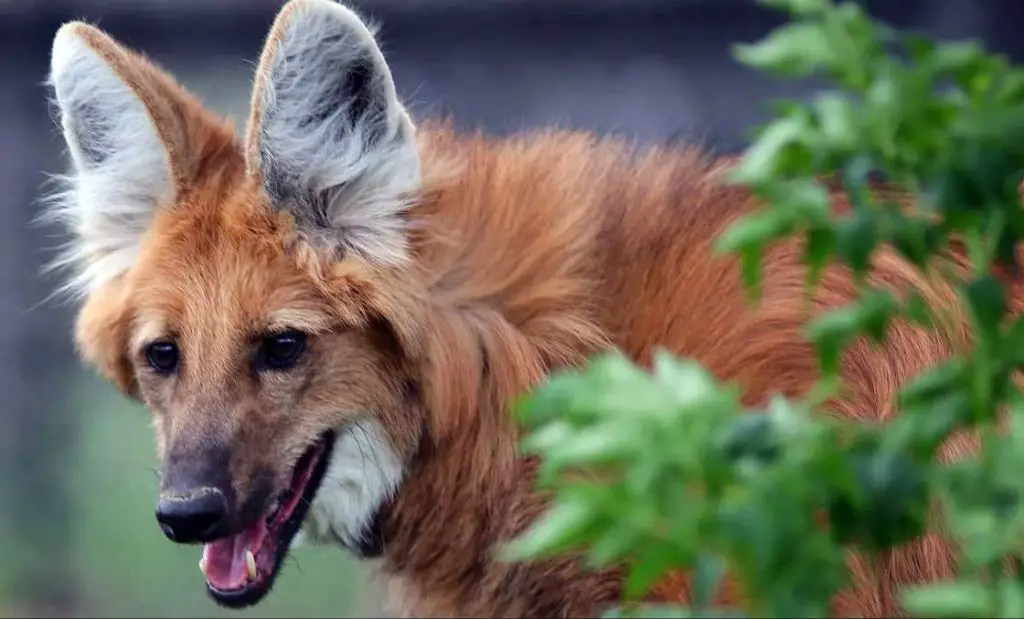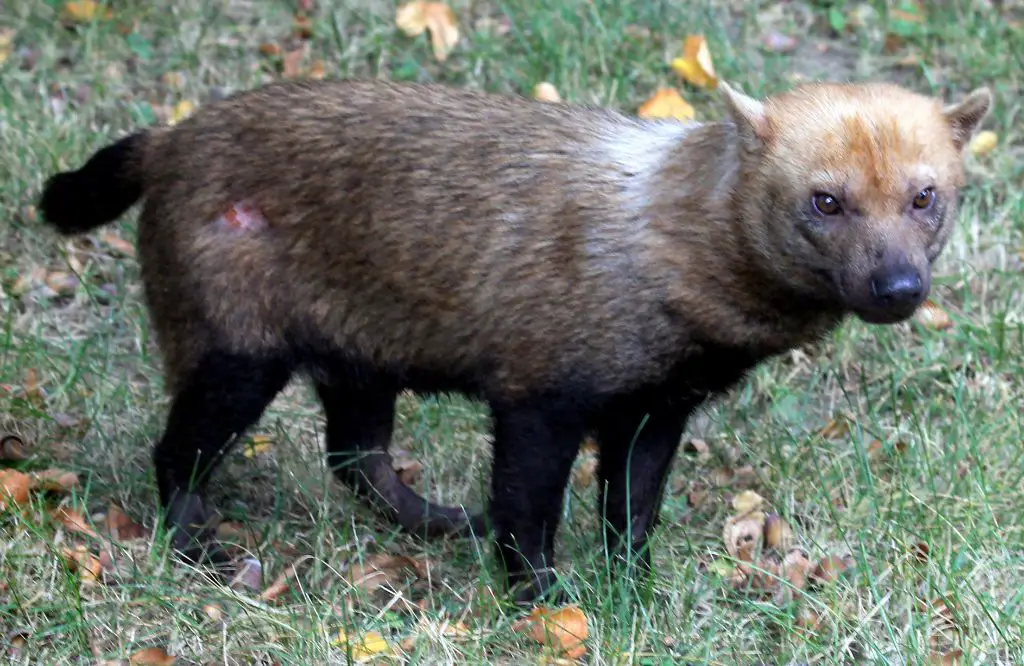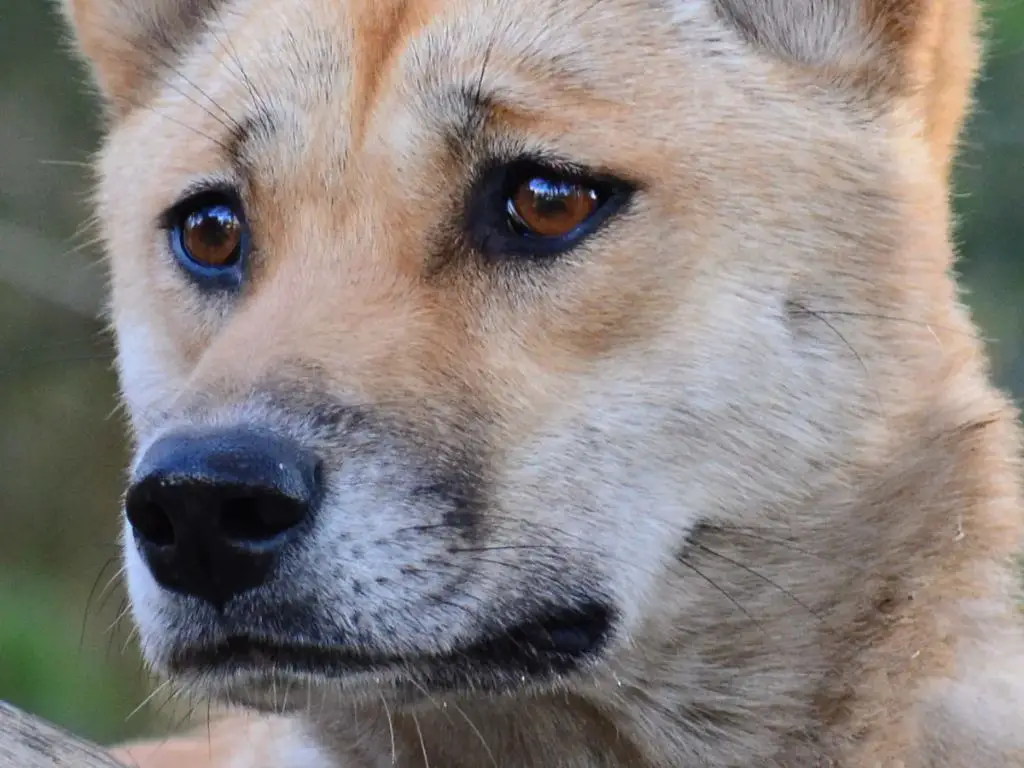Introduction
There are several wild canids, or dog-like animals, that resemble domestic dogs in appearance but are actually separate species. At first glance, some of these animals look nearly identical to common household dogs. However, they have evolved as distinct species with their own unique traits and behaviors. Though they may seem similar to regular dogs, animals such as coyotes, foxes, and dingos are not simply undomesticated dogs. This article will explore some of the wild canids that often get mistaken for dogs due to their physical resemblance.
Coyote
The coyote (Canis latrans) bears a close resemblance to some dog breeds, but is a distinct wild species native to North America. Coyotes have tawny gray or reddish-gray fur, a pointed muzzle, and a bushy black-tipped tail. They typically grow to 30-34 inches in length, stand about 23-26 inches tall at the shoulder, and weigh 15-46 pounds.
Coyotes inhabit diverse environments including prairies, forests, deserts, and mountains throughout much of North and Central America. They are highly adaptable generalist carnivores and can live in close proximity to humans. Coyotes mainly hunt small mammals like rodents, rabbits, and hares, but will also eat birds, reptiles, amphibians, fish, insects, fruits, vegetables, and even garbage. They primarily hunt alone, but may form packs to bring down larger prey.
Coyotes are closely related to wolves and dogs, with which they can interbreed and produce viable offspring. Their social structure and vocalizations are similar to those of wolves, using yips, barks, and howls to communicate. However, coyotes breed earlier in life than wolves and have more flexible social bonds. While wolves rely on coordinated teamwork to hunt large prey, coyotes primarily hunt alone using stealth and ambush techniques.

In summary, the coyote’s resemblance to some dog breeds reflects its close genetic relationship, but its adaptations for survival in the wild mark it as a distinct species.
Red Fox
The red fox (Vulpes vulpes) resembles a small dog with reddish-orange fur, a white underbelly, black ears and legs, and a bushy tail. Red foxes measure 90–112 cm (35–44 in) in length and weigh 3.6 to 6.8 kg (8 to 15 lb). They have a flattish skull with small, upright, pointed ears. Their muzzle, throat, and underparts are white. They have black feet and black-tipped ears that are large and pointy. Red foxes have bushy tails with white tips that are about 70 percent of their body length.
Red foxes inhabit forests, grasslands, mountains, and deserts. They are found across most of North America, Europe, and Asia. They are absent in Iceland, Greenland, Arctic islands, parts of Siberia, and extreme deserts. Red foxes prefer a mix of open areas like fields, meadows, and marshes along with wooded areas. They avoid areas with heavy snow.
Red foxes mostly hunt and eat small mammals like voles, mice, rabbits, and ground squirrels. They also eat birds and insects and will supplement their diet with fruits and plants. They are solitary hunters and hunt mostly at night. They are quick and can run up to 31 mph. Red foxes use their bushy tails to communicate with each other. They live in small family groups sharing a joint territory. Red foxes are not endangered and their populations are stable across most of their range.
Maned Wolf
The maned wolf is an unusual looking canid found in South America. With its reddish-blonde fur and dark black legs, it resembles a large red fox more so than a wolf. The maned wolf has very long legs and big ears, making it the tallest canid in South America. Its markings and coloring provide great camouflage in the tall grasslands where it lives.

In terms of size, the maned wolf is about 3.3 to 3.7 feet high at the shoulder and 4.9 to 5.9 feet long. Their tails add another 1.6 to 2 feet of length. Adults weigh between 44 and 66 pounds. The maned wolf’s long legs help it see over the top of the tall grass in its habitat.
The maned wolf is found in the grasslands and scrub forest regions of eastern and central Brazil, Paraguay, northern Argentina, and Bolivia. It prefers open habitats with tall grasses and scattered shrubs and trees.
These solitary hunters feed mainly on small mammals like rabbits, rodents, and armadillos. They also eat birds, reptiles, fruit, and vegetation. The maned wolf uses its acute hearing and smell to locate and pounce on prey.
Maned wolves are generally shy and avoid humans. They are mostly nocturnal and crepuscular, being most active at night and dawn/dusk. These canids communicate through scent markings and vocalizations. Monogamous pairs will share large home territories of about 18 square miles.
Bush Dog
The bush dog (Speothos venaticus) is a canid species found in Central and South America. They have short legs, small ears, and a distinctive bushy tail, which gives them their name. Bush dogs have soft, dense fur that is brownish-red in color with a lighter underside.
Bush dogs are small, stocky canids reaching only around 1 foot tall and weighing between 15-20 pounds. They are the smallest of the South American canid species. Their short legs and stout body make them appear like a cross between a beagle and a dachshund.
Bush dogs inhabit forests and dense vegetation close to water sources like streams, rivers, and swamps. They are found in parts of Panama, Colombia, Venezuela, Ecuador, Peru, Bolivia, Paraguay, and Brazil. Bush dogs live solitarily or in small family groups made up of a mated pair and their offspring.

These canids are shy and elusive. They are mainly nocturnal and crepuscular, spending the day sleeping in dens. At night, they emerge to hunt for food like rodents, opossums, armadillos, rabbits, lizards, and ground nesting birds. Bush dogs are excellent swimmers and can dive underwater to catch prey. They communicate with high-pitched whines, whistles, and chirps.
Due to habitat loss and fragmentation, bush dog populations are decreasing. They are classified as Near Threatened by the IUCN Red List.
African Wild Dog
The African wild dog (Lycaon pictus) is a canine species found only in Africa, especially in savanna and lightly wooded areas. They have a colorful, patchy coat and large, rounded ears. African wild dogs are medium-sized canines that stand about 30 inches tall and weigh 50-70 pounds.
They have long legs, a slender body, and a bushy tail with a white tip. Their fur is short, sparse, and irregularly blotched with yellow, black, and white. Each individual has a unique coat pattern. African wild dogs have big jaws and special teeth for hunting. They have only four toes per foot, unlike other dogs that have five toes on their front feet.
African wild dogs live in savanna woodlands, grasslands, and open plains. They are found mostly in eastern and southern Africa. They occupy home ranges from 200-1,000 square miles. African wild dogs are very social and live in packs that work together to hunt, raise young, and defend their territory. Packs vary in size but can include up to 20 adults and yearling offspring.
African wild dogs are effective hunters that prey mainly on gazelles and other antelopes. They hunt in packs, relying on speed, teamwork, and relay chasing to wear down their prey. Their success rate is around 60-70%. They bring down the animal and share the meal communally. African wild dogs play and rest between hunts.
African wild dogs are endangered due to habitat loss, conflict with humans, and disease outbreaks. Their numbers have declined dramatically in the last century. Conservation efforts aim to protect remaining populations and reduce threats to their survival.
Dingo
The dingo (Canis familiaris dingo) is a dog found in Australia. Despite its name, the dingo is actually not a dog breed but a distinct dog species that is native to Australia. The dingo resembles a domestic dog in appearance, though it is generally leaner with erect ears, a wedge-shaped head, and a bushy tail.

Dingoes range in size from about 35-60 pounds for males and around 22-40 pounds for females. They typically stand around 12-16 inches tall at the shoulder. Their fur is usually reddish-brown or tan in coloration with white markings on the feet, tail tip, and chest.
Dingoes mainly inhabit the wild and outback regions of Australia, particularly in the northern and eastern parts of the continent. They can be found in a variety of habitats from grasslands to forests and deserts. Dingoes are opportunistic carnivores that hunt small to medium-sized prey like rabbits, rodents, birds, and lizards. They are capable hunters and employ techniques like tracking, stalking, chasing, and ambushing their prey.
While dingoes bear a close resemblance to domestic dogs, they are a distinct species that is believed to have been introduced to Australia from Asia around 4,000 years ago. Dingoes are wild canids that have never been fully domesticated. Due to their similarity to domestic dogs, there has been genetic exchange between dingoes and domestic dogs, especially where the two come into contact. However, dingoes generally remain quite genetically distinct from modern domesticated dogs.
Behaviorally, dingoes share some traits with domestic dogs but also display more wolf-like characteristics suited to surviving in the wild. They are generally wary of humans and avoid close contact or habituation. Dingoes are highly social animals that form packs with complex dominance hierarchies and kinship bonds.
Chrysocyon
Chrysocyon, also known as the maned wolf, is the largest canid species in South America. It has a distinctive reddish-orange coat and long, black legs, giving it an overall height of nearly 3 feet. The maned wolf inhabits central South America, primarily in grasslands, scrub forest, and wetlands. Though it resembles a large fox, the maned wolf is not closely related to other canids and is the only species in its genus Chrysocyon.
The maned wolf is an omnivore that hunts small and medium-sized prey at night, including rodents, birds, and rabbits. It also forages for fruit, vegetables, and insects. The maned wolf has several unique adaptations, including its long legs that allow it to see above the tall grasslands it inhabits. Its urine has a strong, musky odor which marks territory. The maned wolf is a solitary animal and mates only once a year. After a gestation of 60-65 days, a litter of 2-6 pups is born.
While not directly threatened, the maned wolf is at risk from habitat loss and being hunted by farmers. Its shy nature and low reproductive rate make conservation a priority. Overall the maned wolf remains mysterious, with much still to learn about its behavioral patterns in the wild.
Conclusion
In summary, there are several wild species that resemble domestic dogs in appearance but are distinctly different animals. This article covered coyotes, red foxes, maned wolves, bush dogs, African wild dogs, dingoes, and chrysocyons. While they may look similar to pet dogs, these are undomesticated, wild animals with unique features and behaviors.
Coyotes, foxes, and dingoes belong to the Canidae biological family, which also includes wolves and domestic dogs. However, they are separate wild species that fill different ecological niches. Maned wolves, bush dogs, and African wild dogs belong to different genus and species than domestic dogs.
Even though some of these animals look quite dog-like, it’s important to remember they are not simply “wild dogs.” Each species covered has its own adaptations and survival strategies. Some, like bush dogs and African wild dogs, have very different social behaviors compared to domesticated dogs.
While their dog-like appearance may be deceiving, these animals are undomesticated and should be appreciated from a distance as the wild species they are, playing vital roles in their native habitats and ecosystems.
References
Dog Enthusiast. (2020, March 4). 5 Wild Animals That Look Like Dogs But Aren’t Dogs. Dogable. https://www.dogable.net/5-wild-animals-that-look-like-dogs-but-arent-dogs.
LVCA rescue. (n.d.). 13 Wild canids and foxes that look like dogs – LVCA rescue. LVCA Rescue. Retrieved February 27, 2023, from https://www.lvcrescue.org/news/13-wild-canids-and-foxes-that-look-like-dogs
Thornhill, R. (2016, August 29). From bush dogs to maned wolves: Seven animals that look like dogs… but are NOT related to your pet pooch. Daily Mail Online. https://www.dailymail.co.uk/sciencetech/article-3764748/From-bush-dogs-maned-wolves-Seven-animals-look-like-dogs-NOT-related-pet-pooch.html
Brand, V. (2021, August 9). 13 wild dog species and where to find them. Treehugger. https://www.treehugger.com/wild-dog-species-and-where-to-find-them-5193328
World Wildlife Fund. (n.d.). African wild dog. Retrieved February 27, 2023, from https://www.worldwildlife.org/species/african-wild-dog